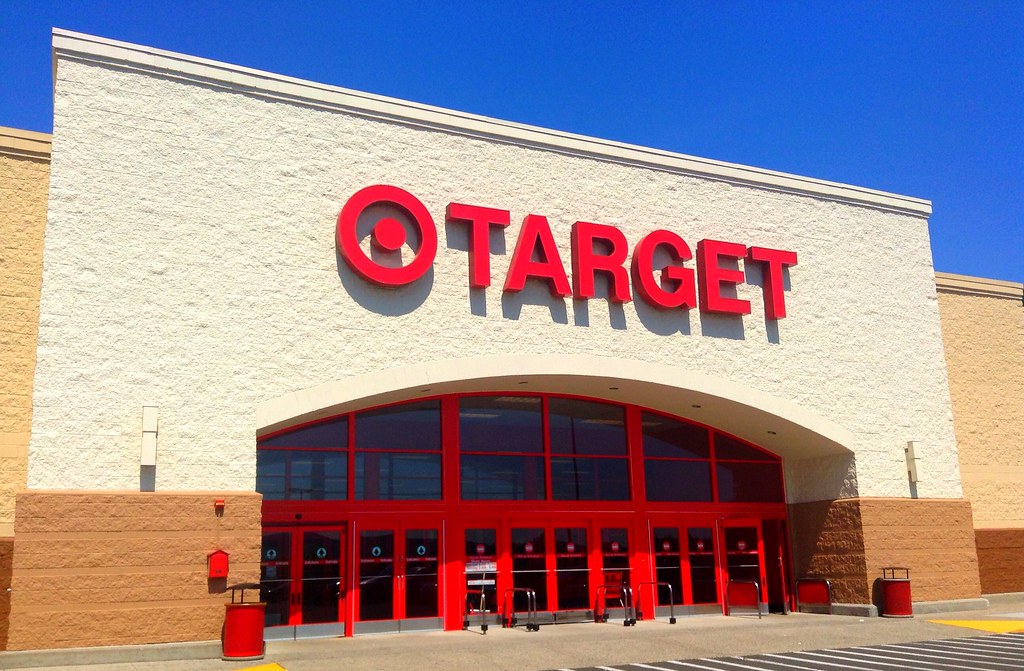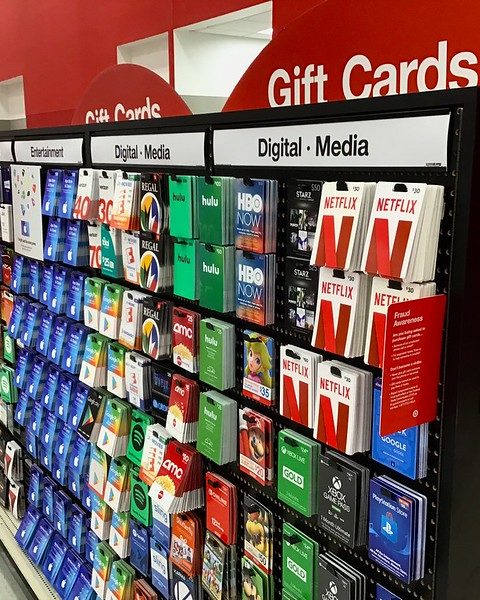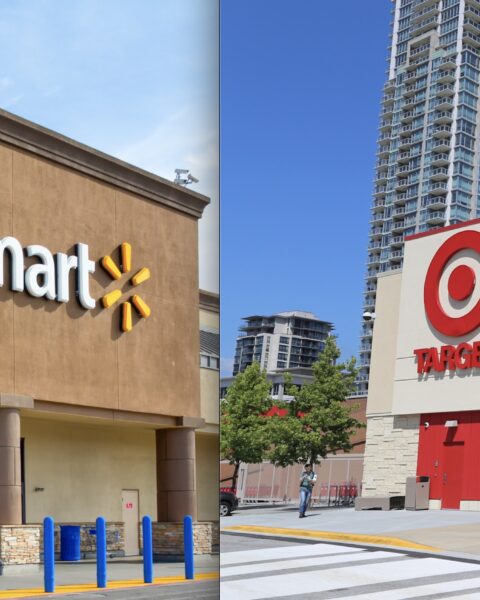As a millennial, I basically grew up at Target. Whether we needed school supplies, Christmas presents, or a new rug for the kitchen, Target was the go-to stop for my family in the 90s and early 2000s.
But Target’s place among retail royalty might be up for reconsideration in 2023 after some recent financial developments. In 2022, Target saw profits drop significantly in both the second and third financial quarters, and it’s unclear yet when or how the company will fully recover.
The reason for Target’s fumble is threefold–inflation, theft, and shifting demand.

Contents
Post-Covid Shoppers Shop Differently
At the height of the Covid-19 pandemic, retailers like Target were selling record quantities of decor items, non-essential homegoods, and loungewear. Things like lamps, coffee makers, and comfy clothing flew off the shelves, and Target couldn’t seem to keep enough in stock.
Unfortunately, as the pandemic lifestyle has gradually shifted back toward the status quo, Target shoppers are less interested in redecorating their living rooms and more interested in grabbing groceries and household essentials as needed. As a result, Target entered 2022 with an excess of popular pandemic products that they couldn’t seem to sell off.
In hopes of clearing out excess merchandise and meeting shifting consumer needs, Target decided to slash prices on stubborn inventory items in 2022. They even canceled $1.5 billion in inventory orders from lower demand product categories, CNBC reported.
Despite high hopes for this strategy, Target’s profits continued to drop quarter by quarter. The sale of marked-down items didn’t yield the kind of revenue Target needed, and the rising cost of supplies and transport fuel hit the retailer hard. As of August 2022, the company’s shares were already down by about 22% from the previous year.
The Role of Inflation
In June 2022, inflation peaked at around 9%. Shoppers in the US hadn’t felt the burden of such high inflation since the early 80s, meaning that for many shoppers (myself included), recent inflation rates represent a lifetime high.
As a result, profits reported by Target in the second financial quarter of 2022 (April-June) had dropped by an almost unbelievable 90% from the previous year. This came after Target had lowered prices in an attempt to clear out inventory and increase affordability for customers. Nevertheless, Target ended its second quarter with 36% more inventory when compared to the previous year, meaning that shoppers simply aren’t buying as much as they used to.
In yet another troubling turn of events, Target saw its profits drop by a staggering 52% in the third financial quarter of 2022 (July-September). Both profit nosedives were primarily caused by the pressure of inflation. Unfortunately, US shoppers are continuing to pinch pennies as inflation rates rise.
According to a recent article from Forbes, the rise of inflation rates is actually beginning to slow down, but it’s too early to tell whether this will translate to recovered profits for Target. As Forbes notes, just because inflation rates are slowing does not mean they’re low. US shoppers will likely be feeling the burden of disproportionately high prices for years to come, assuming that wage increases continue lagging significantly behind inflation rates.
Is Target Losing The Battle With Shoplifters?
Inflation and shifting consumer demands aren’t the only reason Target’s profits are suffering.
In a one-two punch, Target is now stumbling due to historic losses from organized crime at their brick-and-mortar stores. In other words: shoplifters are leveling serious damage against Target’s viability as a business.
By November 2022, Target had already lost over $400 million to “inventory shrink,” as Business Insider reported. According to Target CFO Michael Fiddelke, this number was expected to rise to $600 million by the end of 2022. Though it might not sound significant, this represents over 2% of Target’s total profits in 2022.
In fact, MacroTrends.net reports that Target saw a 9.73% decline in profits from 2021 to 2022. This means that nearly a quarter of Target’s profit loss in 2022 was the result of organized crime.
The Bigger Picture
Target isn’t the only retail corporation suffering at the hands of shoplifters. According to a survey conducted by the National Retail Federation, organized retail theft increased by an average of 26.5% for retailers in 2022. This translates to approximately $100 billion in total loss for US retailers.
So, why is property crime on the rise?
It’s worth noting the potential connection between cripplingly high inflation rates and the rise in organized theft. According to another report from Business Insider published in July 2022, high inflation rates are statistically associated with increased rates of crime, especially theft and burglary.
In fact, professor of criminology Richard Rosenfeld insists that rising inflation rates are a more reliable predictor of increased property crime rates than unemployment or a recession. When prices rise, he says, some consumers are forced onto the black market to get their needs met.
According to data published by the National Retail Federation in 2021, allergy medication and laundry detergent are among the top inventory items lost to organized crime, suggesting that this type of crime is motivated primarily by necessity.
What Does The Future Hold For Target?
Considering the unpredictable nature of the economy at present, it’s impossible to predict what’s ahead for Target. The company could recover from its 2022 losses as the rise of inflation rates slows down and the pandemic era comes to a close, or it could continue to see profit losses in the years to come.
But the company isn’t just waiting to see what happens.
In November 2022, Target’s chief operating officer John Mulligan told Business Insider that Target is implementing new measures to try to combat theft. While he didn’t go into detail about these measures, he stated that Target is partnering with “law enforcement, legislators, community partners and retail trade associations to address” the problem.
Target is also continuing to focus on consumer needs, prioritizing item categories like groceries and household essentials over lower demand items like clothing.
Ultimately, Target’s success will be determined by the buying power of their consumer base. If US shoppers can afford to shop at Target, they will. But only time will tell whether the economic circumstances of the average US consumer will shift significantly for the better anytime soon.






